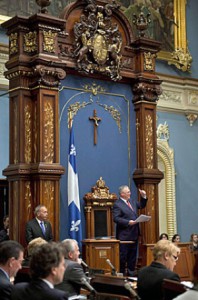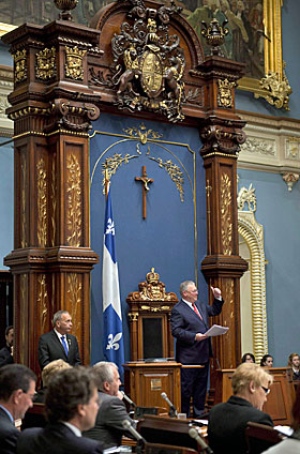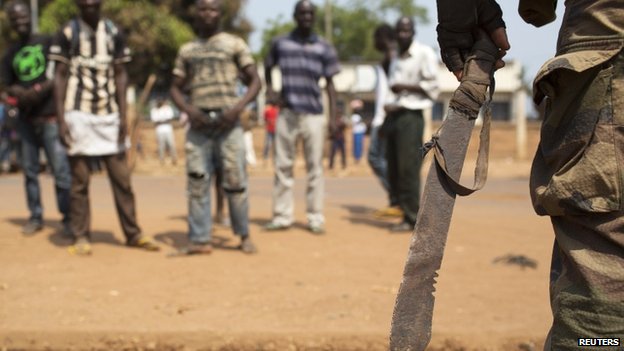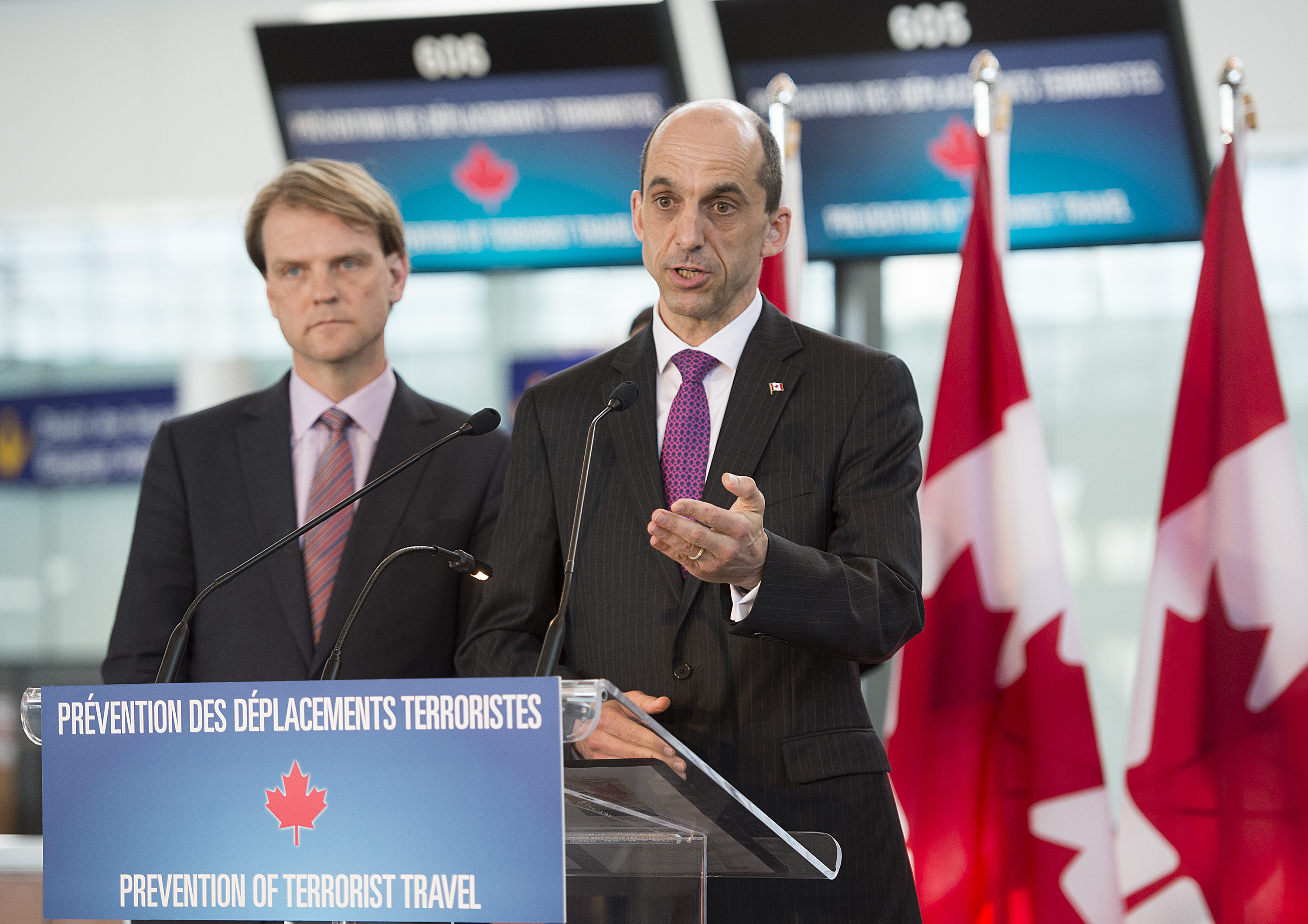
In the space of little more than fifty years, between the end of the Second World War and the close of the twentieth century, the Canadian province of Québec puzzlingly went from being one of the most socially traditional, politically conservative, and religiously devout regions of the developed world to one of the very least; becoming a so-called province laïque, or secular province. As a result, for Catholics in Québec today, let alone adherents of other faiths, religion has come to occupy a different place in their personal consciousness than what it once did; religion has become a freely chosen personal journey rather than a celebration of a total vision incarnate in society.
To understand the province’s queasiness with religion, it is necessary to appreciate just how strong the Church used to be – and how decisively it was displaced. To understand all this, let us go back in history to examine the structural and sociological precursors of the Roman Catholic Church’s diminished importance among francophone Québecers.
Québec’s Catholicism: A Persistent Tradition
Catholicism in Canada evolved over a period of four hundred years, from the inauguration of the first Catholic colony within Canada in 1608 by Samuel de Champlain to the development of missions in the seventeenth century to the aggiornamento of the Vatican II in the twentieth.[1] During this extended period, Canada transformed from what King Louis XIV once described as ‘a few acres of ice and snow,’ to a multicultural country with a firmly rooted Catholic Church. Owing to unwavering evangelization efforts over the centuries, Catholicism currently holds the title as the largest religious denomination in the country.[2]
Ever since the English conquest of 1760, the Roman Catholic Church of Québec was the most important single agency for the defense and perpetuation of French-Canadian heritage in North America. Perhaps in no region of the world was the Church and its representatives held in as high regard among all elements of the population. Over time, Québec Catholicism, in fact, had been so well adapted to traditional Québec society that when it came to the early twentieth century it was hard for the Church to situate itself in a context of urbanization, industrialization, and secularization of life. In the mid-twentieth century, the Church began to face the same problems which confronted European Catholicism in the nineteenth century. Indeed, Québec was, in a comparative sense, still lagging behind modernity. While Christian citizens of other Western nations met the challenges of industrialization and modernization that came with nation-building, French-Canadian nationalists, at the time, embarked on an aggressive programme of ‘Church-building’ with the goal of creating an Église-nation (nation-Church) rather than a nation-state.
Duplessis and a Thriving Church
It is usually said, and rightly so, that Québec moved rather late into cultural and political modernity. Prior to 1960, the provincial government had no ministry of education, no ministry of health, and no ministry of social welfare.[3] During his years as premier from 1944 to 1959, Maurice Duplessis, a conservative-nationalist of the Union Nationale, defended this tradition in unbending fashion, declaring Québec a Catholic province and actively promoted the Church’s welfare without any government interference. The provincial government protected traditional, pre-modern cultural ideas, restricted religious and political pluralism, and refused to regard the state as responsible for the social development of the population.[4]
As such, in 1958, more than 85 per cent of the population identified themselves as Catholic and more than 88 per cent of those Catholics attended mass every Sunday.[5] A virtual army of nuns, priests and brothers, which by 1962 numbered more than 50,000 oversaw the Church’s massive bureaucracy.[6] The Roman Catholic Church of Québec exercised a virtual monopoly over education (schools, colleges, etc.), health care (i.e. hospitals, health care centres, etc.), and the social services (social assistance, etc.) offered to French Québecers who formed the majority of the population. As a result, the Church’s organizational presence became ubiquitous. This semi-established status and public presence was legitimated by the traditional religious nationalism, which united a conservative, clerical version of Catholicism and French-Canadian ethnic identity.
The Rallying Cry, the Revolution and Identity
Things changed with the Révolution tranquille (quiet revolution). It was a period of effervescence. It made Québecois identity political, proud, and fierce, while reducing the Roman Catholic Church of Québec from a monolith to an anachronism.[7] This ‘Quiet Revolution’ meant that the state and not the Church was to be “the embodiment of the French nation in Canada.”[8] As a result of high levels of post-secondary education, urbanization, and organized labour mobilization, many Québecers wanted to catch up with modern society, be open to pluralism, participate in democratic decision-making, express themselves in art and literature free of censorship, and create a modern educational system qualifying students to advance in the fields of science and technology. The agents of this cultural upheaval also wanted to free themselves from the economic domination of the English-Canadian elites and assume full responsibility for their own society.[9] Many, therefore, campaigned under the slogans Il faut que ça change (“Things have to change”) and Révolution tranquille, Maintenant ou jamais…Maîtres chez nous (“Now or never…Masters of our own house”).
By the 1970s, the Québec state had taken over the Church’s work in education, health care, and the social services. Thus the Church had to react both to its loss of real power and to its loss of control over the important symbols, stories, and values carried by traditional religious nationalism over the centuries. By 1980, no nationalist group sought to promote a Catholic culture or to remake Québec’s economy in conformity with the Church’s social teaching. No one imagined that Québec was a Catholic state. Just as with its control over schools, hospitals, and social services, the Church leadership saw its control over national movements evaporate in two decades.
Remarkably, the Church reacted to the secularization of Québec society with relative serenity. Certainly, the bishops and other religious leaders objected to the government’s plans for the secularization of education and the religious communities opposed the reforms which turned their hospitals into public institutions.[10] Generally, however, Québec society avoided the tragic cultural schism that marked the movement into secular modernity of Catholic countries like France and Italy. In Québec, the Church did not withdraw into a ‘Catholic ghetto,’ anathematize the new society, and work towards a restoration of the old order.[11] Part of the reason for this was that many of the supporters of the reforms were members of the Church. Part of this also had to do with Vatican II. Both of which I will cover in the following sections.
Vatican II and Religious Modernity
The Révolution tranquille coincided with the reforms of the Second Vatican Council (Vatican II), which radically altered the Church’s self-definition, and the emergence of faith and justice movements in the late 1960s and 1970s. Vatican II advocated a new openness to modernity, defended the autonomy of secular institutions, fostered ecumenical relations with Protestants, expressed its respect for religious pluralism, and urged lay people to become responsible actors in their society.[12]
Interestingly, it just so happened that just as the Québec state was declaring its autonomy from the Church, the Church was itself affirming the autonomy of political society, the freedom of individual consciences in political matters, and the need for citizens to involve themselves in the important debates and projects of their societies. As a result of this coincidence, Canadian theologian Gregory Baum reasoned that Vatican II helped ease Catholics in Québec into being critical of the old Québec and its religious nationalism, while still helping them to remain good Catholics. Despite misunderstandings, heated disagreements, and personal grievances, the Québec Church and state learned to cooperate and compromise in a spirit of pluralism, reform, and tolerance.[13] This is not to say that Vatican II and the emergence of a faith and justice movement were the direct causes of the Church’s acceptance of the new Québec society and the new nationalism, but these developments had a sort of elective affinity, that, in one sense, allowed the Church to become more open to compromise and undermined the position of Catholic conservatives who dreamed of a restoration of the old society.




